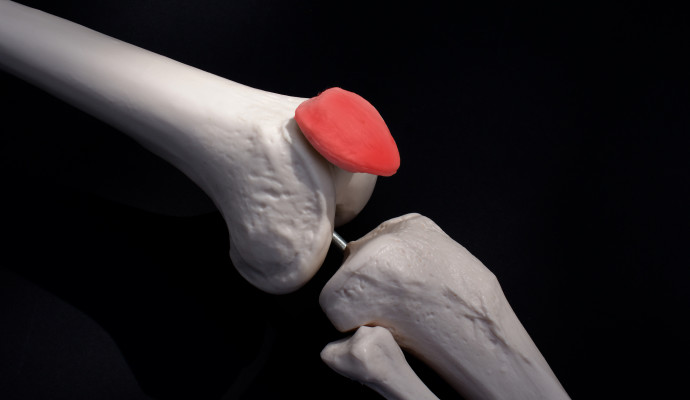
Patellofemoral Pain Syndrome
The structure of the knee joint provides a high level of resistance that enables weight support, activity control, and the bearing of heavy loads. Because of the knee joint having such an important weight bearing responsibility, it has a large range of motion to assist.
Patellofemoral pain syndrome is pain experienced at the front of the knee and around the kneecap (patella). It commonly presents in teenagers, manual labourers and athletes. It sometimes is caused by the wearing down, roughening or softening of the cartilage under the kneecap. Often an individual first notices the pain when they are going up and down stairs, squatting, kneeling, jumping or running. Patellofemoral pain syndrome may be caused by overuse, injury, excess weight, a kneecap that is not properly aligned or changes under the kneecap.
The pain is usually the result of the kneecap not tracking smoothly through the groove in the underlying bone when the leg is being bent and straightened. Sometimes the knee can buckle suddenly, giving way and not supporting the body weight. You may also experience catching, popping, or grinding sensations when walking.
Patellofemoral pain syndrome can be relieved by avoiding activities that make symptoms worse. Avoid sitting, squatting or kneeling in the bent knee position for extended periods of time. Adjust bicycle or exercise bikes so that the resistance is not too great and seat is at a comfortable height. Rider should be able to spin the peddles without shifting weight from side to side. Rider’s legs should not be fully extended at the lowest part of the pedal stroke. Avoiding bent knee exercises such as squats and deep knee bends can also assist pain.
Short Term Treatment:
1. Treat the pain when it first happens icing the knee for 10- 20 minutes after activity.
2. Taping the knee may also benefit in the early stages of recovery.
3. Seek medical advice if you symptoms worsen or do not improve.
Long Term Treatment:
1. Perform stretching and strengthening exercises for leg muscles.
2. Strengthen the quadriceps (front thigh) muscles with strengthening exercises.
3. Tight hamstrings, and muscles from the thigh, calf or hip require regular stretching to increase flexibility and decrease tightness around the knee.
WIN a 30 Minute Massage valued at $47
Answer 5 True or False questions and place your completed quiz in our feedback box by 25 November 2015 for your chance to win.









